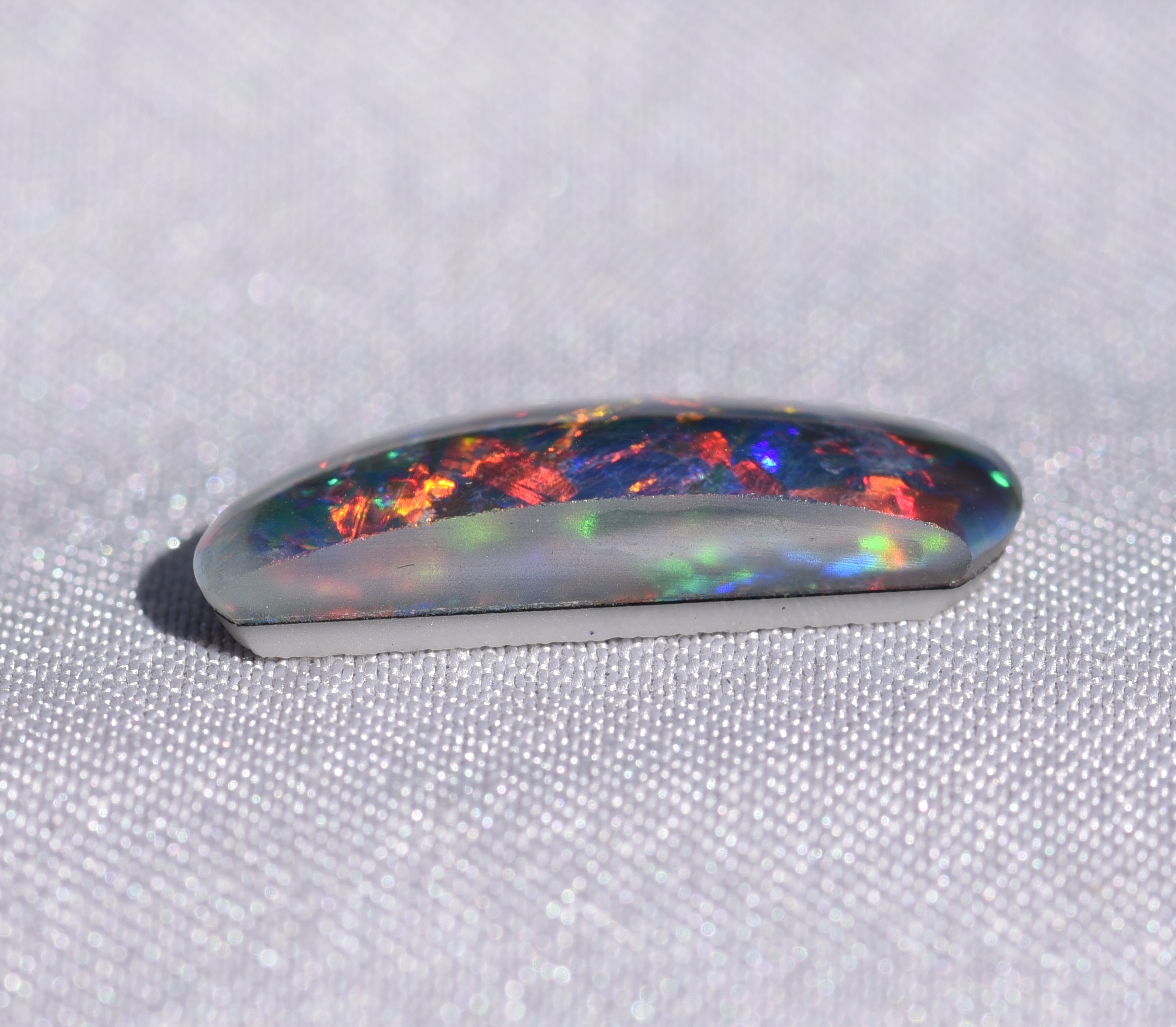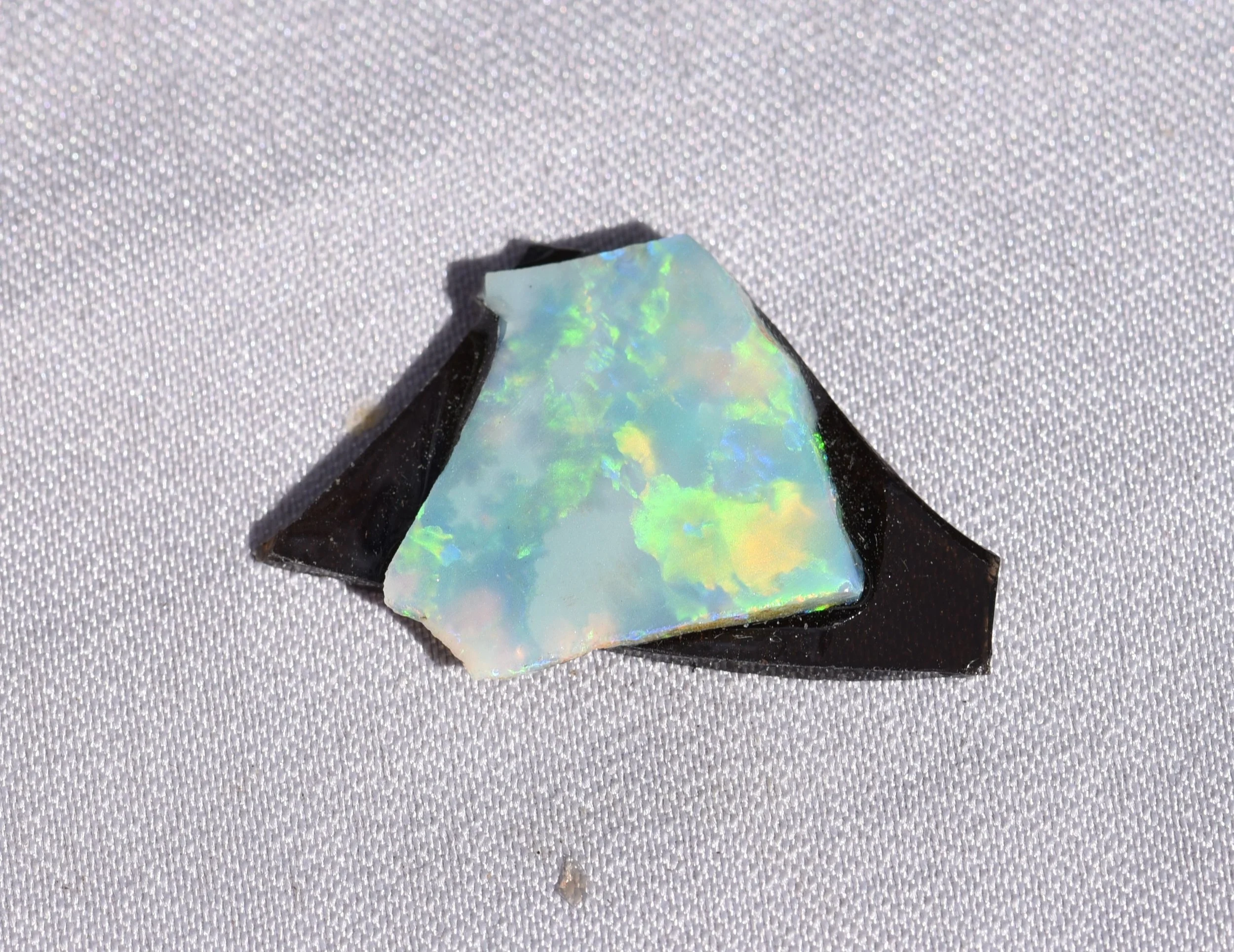Composite Opals
The presently operating Opal nomenclature (The Australian Gemmologist Volume 19, Number 12, 1997) describes composite opals as:
Triplet opals - are a composition of three pieces where a thin slice of natural opal is cemented between a dark base material and a transparent top layer (usually quartz or glass).
Doublet opals - are a composition of two pieces where a slice of natural opal is cemented to a base material.
Mosaic and chip opals - are a composition of small flat or irregularly shaped pieces of natural opal cemented as a mosaic tile on a dark base material, or encompassed in a resin.
curators note:
Since the introduction of the original opal nomenclature in 1999, and as described above, a number of different things have occurred that may mean that the nomenclature needs some revision.
So there are two points to be made here:
The nomenclature was primarily written to describe natural mined opals and as you will read in the descriptions above, the terminology refers to composites of “natural” opal. Readers should be aware that in place of the layer of natural opal many manufacturers have resorted to also using synthetic or imitation opals as the opal laminate in these materials.
In a proposal for changes to the original nomenclature these “types” of opal would be referred to under “Category 7”, You can read more about the proposed categories of opal in the nomenclature section of the website.
CIBJO the world jewellery confederation describes composite gemstones as:
“artificial products composed of two or more previously separate parts or layers assembled by bonding or other artificial methods. Their components may be natural and/or artificial but at least one part must be a gemstone” - (CIBJO Blue book, Gemstone Book Clause 5.18, 2015)
But what does this mean in simple language and how does it apply to opal gemstones. Simply a composite opal is one that is made up of two or more parts and manufactured to look like or imitate a natural mined opal. The opal (gemstone) portion of the composites can be either natural (mined out of the ground) opal or a manufactured synthetic or imitation opal. (see section on each type of composite opal for further information)
The most simple and more recognisable forms are doublet opals (which consist of two parts), and triplet opals (which are composed of three parts) as in the illustrations provided. However as with most opal things, composite opals come in the many different forms or varieties:
Note that this photo is of a cross section of a triplet opal as constructed, from three parts, in this case the top transparent layer is frosted on the side. The thin opal layer is represented as just above the black line. The black line is a surface layer on the otherwise grey backing material.
Triplet opals are designed to imitate natural black opal in most instances, and are used and marketed in jewellery as a less expensive alternative to natural mined precious black opal.
Note that triplets can be made with a layer if imitation or “synthetic” opal
Note that this photo is of a cross section of a doublet opal constructed from two parts, in this case a domed layer of natural opal cemented to a layer of black potch.
Doublet opals are also manufactured to imitate natural black precious opal.
Not all doublet opals are domed as in this photo many are flat laminates on a base material. Some opal doublets in jewellery are very old and manufactured from very bright natural opal material, so not all doublets are inexpensive.
Doublet opals can also be manufactured with an ironstone base material to imitate natural precious ironstone boulder opal.
This photo shows the surface of an intricate and well manufactured mosaic opal. In this specimen the light crystal opal which is in very thin laminated and irregular shapes has been intricately tessellated and “glued” onto a dark base material. The manufacture of this mosaic opal has taken time and been well matched and aligned.
This Photo shows a randomly placed number of opal chips which have been immersed or spaced in an encompassing resin which also has a black background material underneath.




















